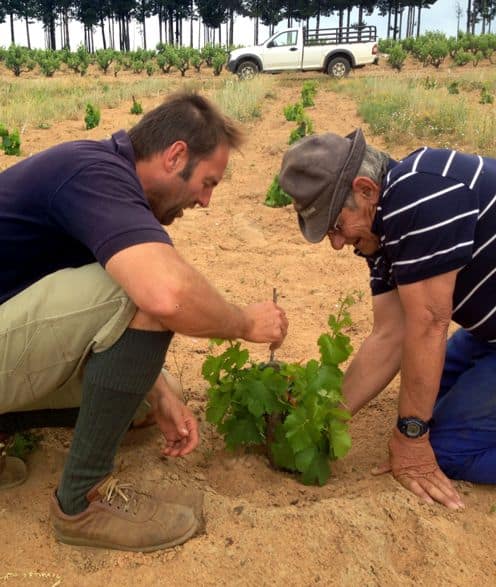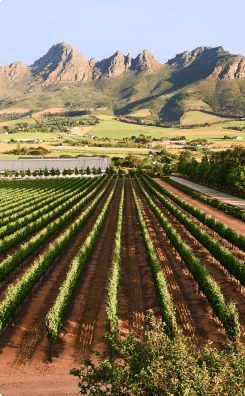Tim James: How a Burgundian mindset shapes Cape wine
By Tim James, 10 November 2025

2

The status of Burgundy as a compelling model for winemakers around the world has grown increasingly clear over the last decade and more – accompanied by (presumably no accident, this) the desirability of Burgundian wines for wine lovers as well as winemakers. A recent article by Guy Woodward on this “Burgundisation” (an ugly word that he rather reluctantly agrees to adopt) aptly summarises the style and approach as emphasising “precision of place, scale and approach”, with Burgundy representing “nuanced, mesmerising wines of place, produced on a small scale by historic, rural domaines that are often family owned”. That should sound familiar to admirers of now-not-so-new-wave Cape wine, but there’s a further element of Burgundisation that I would draw attention to, certainly in South Africa; I’ll come back to that.
The crucial impetus for Burgundisation here – the appetite was already strongly present – came in 2003 when the official “Bordelisation” that had ruled ambitious South African wine production since the early 1970s was at last abandoned by the authorities and Burgundian practices and approaches could take the burgeoning Cape wine revolution further. At a lower level of ambition, the majority co-op approach was also weakening, in a different way, which became signficant too. So, in 2003, the privileges of the “estate”, largely inspired by Bordeaux and enshrined in law as the smallest locus of origin, were dropped. It became possible for the first time to talk of vineyards on labels and advertising material. The “single vineyard” concept was taken into wine law and a registration system for it was established.
It all resulted in what we now know, and much of what we drink. Vineyards and terroir became the crucial concepts that we had to learn (“old vineyards” were to follow soon!), to accompany the more elegant approach allegedly associated with pinot noir and chardonnay from Burgundy. And the history of Cape wine allowed for a triumphant flowering of the terroir approach. The more or less grand, mostly family, estates of Stellenbosch, Constantia, Franschhoek, and elsewhere (now including the developing south coast too), could proceed sufficiently as usual, but there was ample scope for a whole generation of greatly ambitious young winemakers, fully in tune with international developments, to seek out the fine vineyards that had been submerged by the co-ops, and to make wine from them. The agricultural laws of the country, however, made (and still make) it impossible for small units of land (like one vineyard or section of vineyard) to be easily bought and sold. There are undoubtedly some negative implications in this for the wine industry, but, frankly, winemakers being effectively discouraged from sinking everything into one or two plots has led to an experimentation with a variety of terroirs that has been a really positive factor, so far.
This combination of the comparatively modest level of expense involved in making wine and the quantity and quality (at least potential quality) of readily available fine vineyards was surely unparalleled anywhere in the world. It made possible the rapidity of development that we have seen.
The rise of the vigneron
There was another aspect of all this Burgundisation that tends not to be noticed within that category. The romantic idea of Burgundy (and some elsewheres in classic Europe), now long since modernised but still relevant, was the peasant, tilling his – usually his, sometimes her – patch of soil and then making wine from its produce when the seasons rolled round. The larger estates of Bordeaux, for example, though, as in South Africa, tended to a division of labour distributed between owner, tender of vines and maker of wines – certainly not a rule here in some family properties, but pretty common.
This broke down amongst the new wave. Those winemakers wanted to have an influence on the (sometimes inadequate) culture of the vines whose grapes they were buying from the owner who’d previously tried to get as large a yield as possible to send to the blending vats of the local co-op. Often they sought, where possible, to start managing the vineyard themselves; where not, they tried to work with the owner, preferring to pay by the hectare rather than the yield.
But it was not only the smaller players in the new wave that became traditional vignerons – managing the whole wine-production process, from vine to vat – rather than simply winemakers. I remember Chris Mullineux in the early years of the century taking full control of the vineyards at Tulbagh Mountain Vineyards, and Albert Ahrens at Lammershoek pruning his bushvines according to practices that his neighbour Eben Sadie had brought back from Priorat in Spain. As far from the heartland of the burgeoning wine revolution as Stellenbosch, André van Rensburg was immersed among the vines of Vergelegen. It became ever clear that, at least, the ambitious winemaker should be deeply involved in the vineyards that produced the grapes that he or she must work with, even if it was too large a project to manage entirely by oneself.
It’s an aspect of Burgundisation that’s an integral part of making wines of place. Nowadays, this has become so common in the Cape as to be the norm among the most serious wine-growers, especially the smaller ones. Look for the likes of Duncan Savage and the chances are you’ll find him in the vineyard.
- Tim James is one of South Africa’s leading wine commentators, contributing to various local and international wine publications. His book Wines of South Africa – Tradition and Revolution appeared in 2013.







Mike Serrao | 11 November 2025
The burgeoning “Burgundization Project” in the Western Cape should be enthusiastically welcomed and embraced by the entire industry, including the regulator. The focus on small-scale, family-oriented producers, inspired by the fragmented, terroir-driven model of Burgundy, is a vital step in South Africa’s shift from volume to value. These vintners bring more than just high-quality wines to the market; they are driven by a proud pursuit of exceptional purity. In many cases, these low-volume wines are effectively unadulterated expressions of the vineyard, as their primary motive is terroir expression and reputation, not large-scale commodity profits. This focus on precision of place and hands-on viticulture is the ultimate key to enhancing South Africa’s premium positioning on the global stage.
Irina von Holdt | 12 November 2025
It is interesting to see that the process of identifying a particular vineyard and taking care of it from vine to wine to bottle being describef by Tim as Bugundization. This is exactly the approach we took back in 1995 when we started to make wine. With no vineyards of our own it was the way to go, but the then current legislation did not allow such fantasies. It must be said that the then regulator, the KWV, helped me enormously which may surprise many. From the outset I sought out precious old vineyards, not of Burgundian varieties, but of Chenin Blanc, hence the name of our cellar, Old Vines Wine Cellars. I regarded these old vineyards as national treasures deserving of protection and it became something of an obsession. I spoke about it at every possible opportunity as farmers were equally determined to uproot vineyards that had become less productive. We have thus lost so many valuable old vines. It was Rosa Kruger who picked up on my mission and took it much further, acknowledging me on the way, I must add. We made wine from notable vineyards like Kaapzicht ( what a struggle that was, but the late Danie Steytler’s wife, Yngwild, saw the wisdom of it and prevented the men in her family from uprooting at least some of those vines. It’s now their heritage 1947 vineyard.) We also bought from Klein Helderberg, stunning old vines, all now uprooted and from Saxenberg from their original ungrafted Chenin, among other venerable old vineyards. It is so good to see this idea has become mainstream because I was regarded as oddball and a crazy woman back then. So if it’s called Burgundization, so be it, but’s still a great way to make the finest wines.